The driver ants (also known as siafu ants, army ants) have been crossing crossing my dirt roads quite often, since West Africa. I am not sure exactly which species I have encountered, but for sure, all of them did bite hard. The solders have huge mandibles (see here) and the columns can count up to 50 million ants. It says that the “characteristic long columns of ants will fiercely defend themselves against anything that attacks them“, and surely watching them from too close and and bringing a camera is seen as a threat. “Columns are arranged with the smaller ants being flanked by the larger soldier ants. These automatically take up positions as sentries, and set a perimeter corridor in which the smaller ants can run safely.”
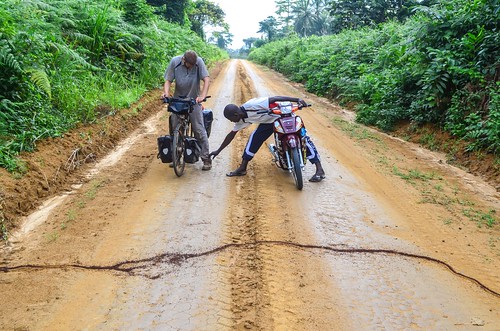
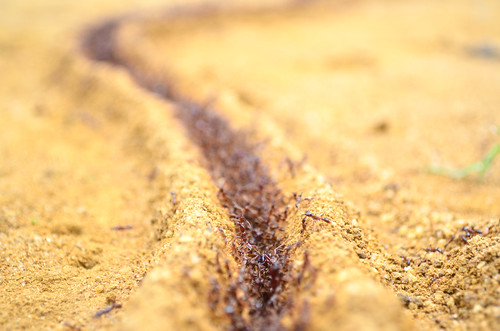
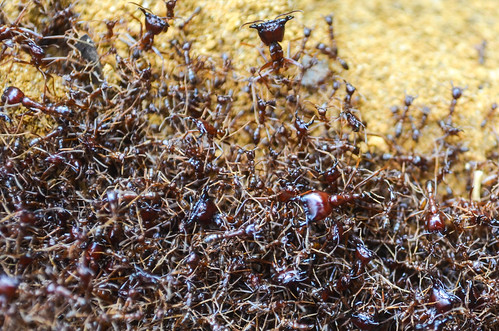
Taking close up photos of the ants is risky: the soldiers, with the big head, will quickly crawl on my shoes and legs. Then, it is already too late: I may find one later in my neck, because they don’t bite instantly. But when they do, you can’t ignore it.
Madzou is accompanying us with his jakarta until a large junction. There are many junctions for the paths for the forestiers to go logging. At one of them, a hunter walks back from the bush with a kind of spotted ferret. It is called mbala.

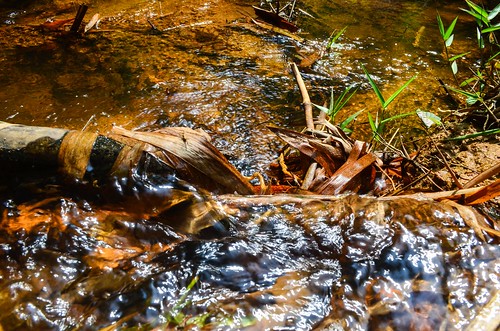
Villagers are still “on holidays”. When we ask for bread, they reply that because of the New Year party, all the food is gone, most of the drinks as well, and the people are still recovering. We heard this on the 2nd, on the 3rd, … and today, January 5th, there is no food because “it’s New Year“.
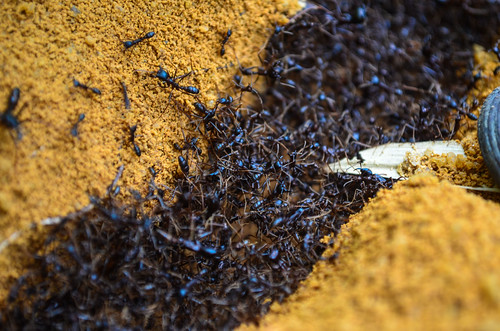
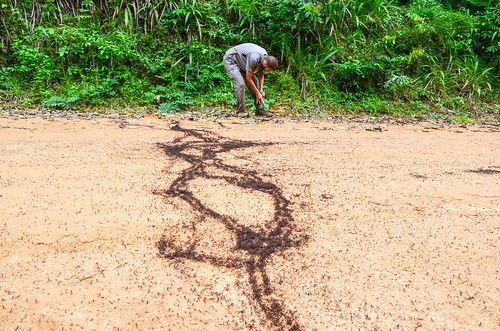
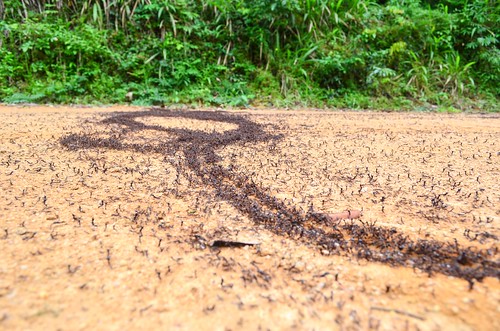
After a long pause since Cameroon, I am finally being called “White” in a local language. I prefer it to “hé le Blanc” and “White man White man“. “Ndele” or “Moundele” is White in Mounkoutouba. When I first heard it, I stopped by the children, pointing at us and shouting “ndele ndele!“, to get a confirmation. In return, a little girl asked me:
– Are you a boy?
– Yes, of course I am! Did you get confused by the long hair?
– No, by the beard. It’s much.
– ???
My beard is “much“? Okay, but then why would it take my away from being a boy? Is it that the beard is more often seen on women than on men? It is true that some women have a nicely groomed goatee.
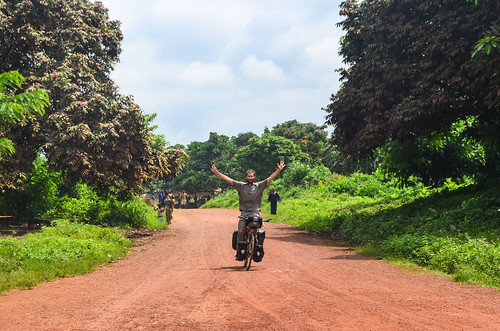
Aiming for Sibiti, we reach Komono before noon. It is a district capital, so it has a police station and restaurants. But the porcupine bush meat with kassava (again) is going down less and less smoothly.
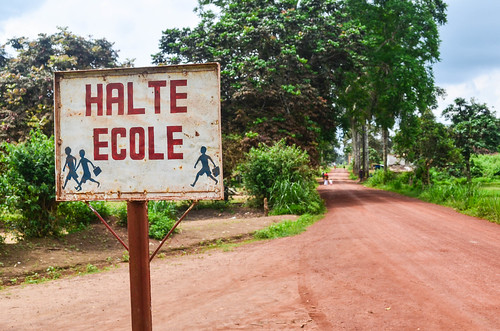

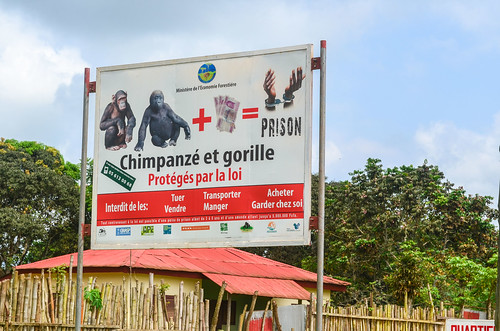
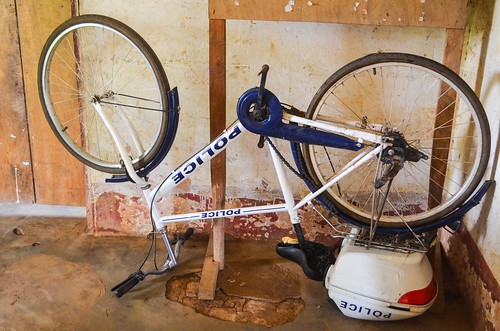
The road, made by a Portuguese company (Escom), is paved from Mapati for the last 20 km of our nearly 100-km day. It has been since Franceville in Gabon that we didn’t ride on such a smooth surface.






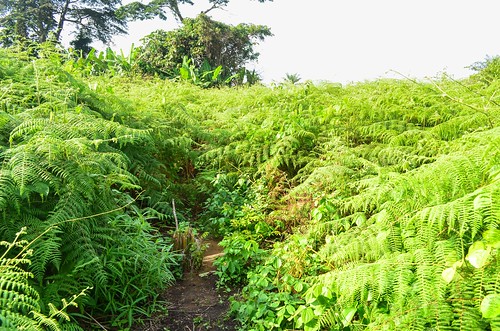
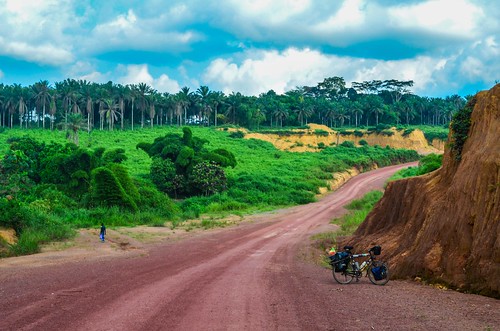
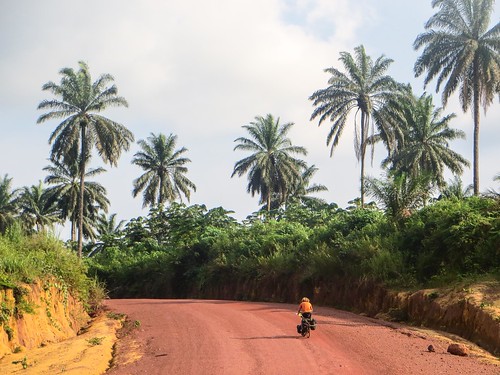
Looking for a hotel in Sibiti is harder than expected: they are all rather expensive for the services offered. The power is supplied everywhere, but only from 6 pm to 10 pm. There is no water in town, so the shower will be a bucket shower anyway. Yet, there is no room available under 15 €.
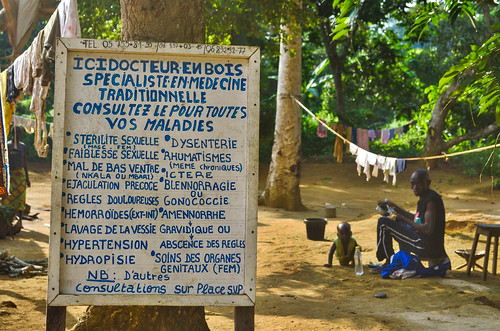
At our final try, we just finish our bargain successfully when the hotel manager says “but … you two are gonna take two rooms, right?“. Of course not, we are sharing one, and that’s why we are bargaining. But in Congo, it is forbidden for two persons of the same sex to share a room. We convince him that we won’t engage into activities that God forbid, and we are allowed to stay in the room. Still, we have to fill in two police declarations and we mustn’t tell anyone else. It will go wrong if the police catch him.
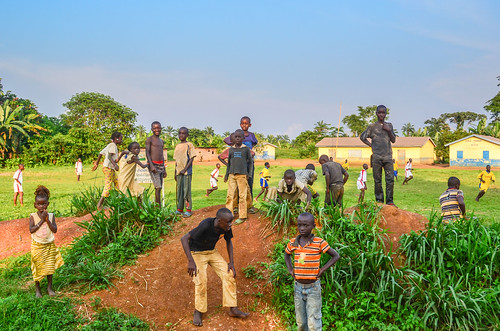
Sibiti is a booming place, where the “boom” is under construction. It will host the celebrations of the national day in six months and the main square is being rebuilt, as well as the main street. There is even a fiber optic cable popping out from the ground! As a result, there is a lot of dust, and at night, it becomes tricky to avoid the mud pools.
Most of the food places are actually just a chicken grill. It is not bad, but we need to eat a lot of something: pasta, rice, beans, fufu, … anything that is not the kassava stick. We really had it too often and we need a break from it. And it appears impossible to find someone serving rice in town! We end up buying 1 kg of rice at the Lebanese (as usual, all small scale supermarkets are run by Mauritanians and middle to large scale supermarkets by Lebanese) and bringing it to a restaurant. Prices are as high as in Gabon, and there is no point eating out if cooking rice and pasta in our tiny pots at home is cheaper and tastier than eating kassava.

The hotel manager says that Gabonese people around Franceville are the same than the Congolese in Sibiti, and that families are split since the borders were enforced in 1925. Afterwards, Zanaga was moved from Gabon to Congo while Moanda went from Congo to Gabon. He adds that during the presidency of Omar Bongo, when money was flowing around easily, they, Congolese, went up to the Haut-Ogooué region of Gabon to vote for him. It must have been fun …
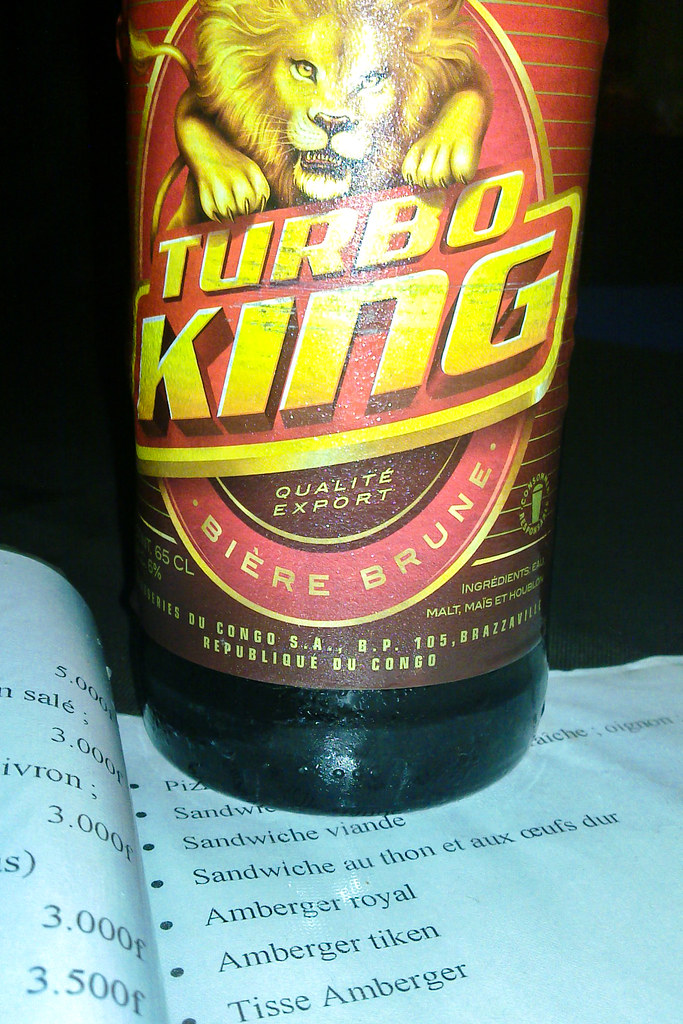
While cycling from Sibiti towards Dolisie, on a nice paved road among the rolling green hills, we hear “Nihao!” I was already used to be called a Chinese, and now, one step further into the skin of someone else, the kids greet me in Chinese. And this, even though we are speaking in French. So what? Then I send a “Nihao kids!” back …

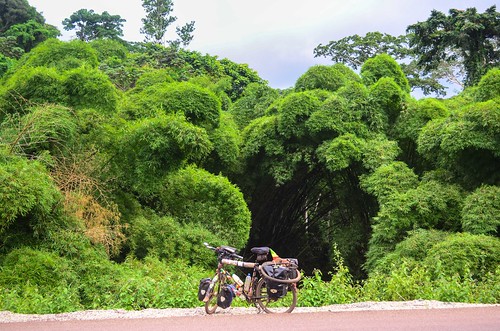
At the end of the day, the rain decides to annoy us. I speed as fast as I can until the closest house. I must bat eyelids constantly to see what is coming up and to avoid the few potholes in the tar.
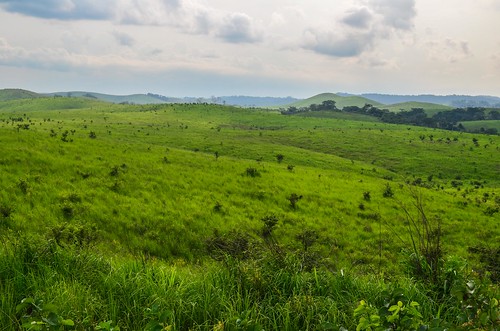
Half wet, I jump in the house with an open door in the first hamlet. There is an old lady making a fire. We shelter for a while but the rain doesn’t stop. We have nowhere to go, no motivation at all to sleep outside, and fortunately, the locals have a spare house. It is leaking and in ruins, but it will be perfect for us.
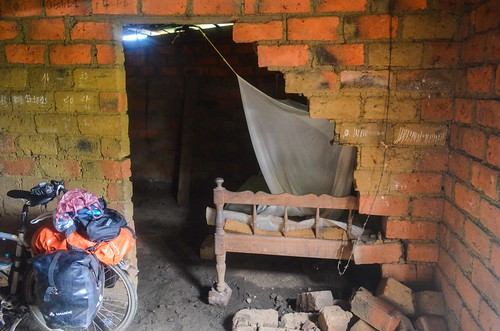
Loudima is the Chinese base. The highway Brazzaville – Pointe Noire is under construction, and the road is finished at the two ends, near the two cities. The middle section, until Loudima on Pointe Noire side, is still “raw”: the previous road linking the political capital to the economical capital was a simple dirt track.

After crossing the Niari river, which gives its name to the province, we stop at the Loudima junction to have lunch at the lady cooking for the road workers. There seem to be a lot of Portuguese speaking, probably people from Cabinda.

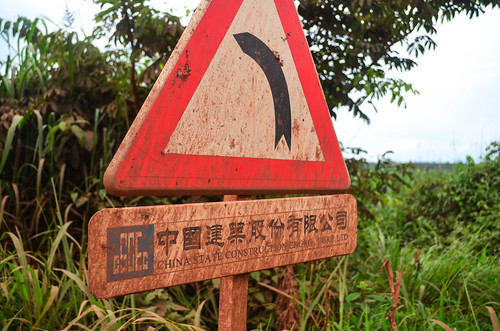
The company behind the Chinese camp is China State Construction Engineering, one of the largest construction companies in the world. But as usual with Chinese state companies, it is hard to know anything about them.
We stop near the old railway to take pictures. The catenary poles are rusty enough to let me think that it is abandoned, but a man says there are trains passing. And indeed, five minutes later, the Congo Ocean train shows up. The Chemin de fer Congo-Océan railway was built by the French between 1924 and 1934 (by a company that will become Spie Batignolles), not without difficulties. Thousands of local workers died, especially in the hilly massif du Mayombe.
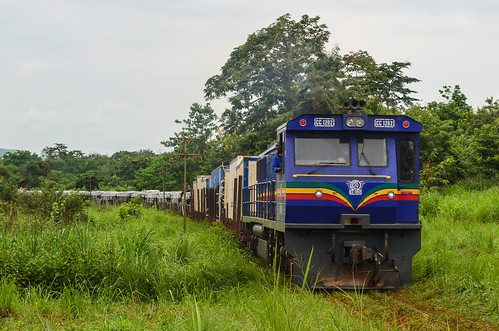
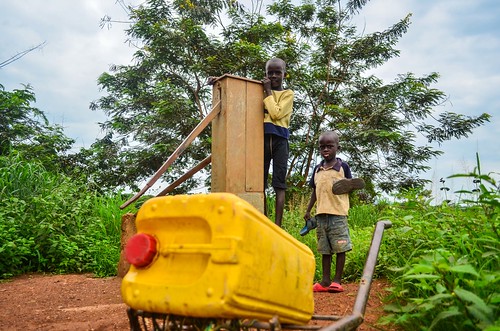

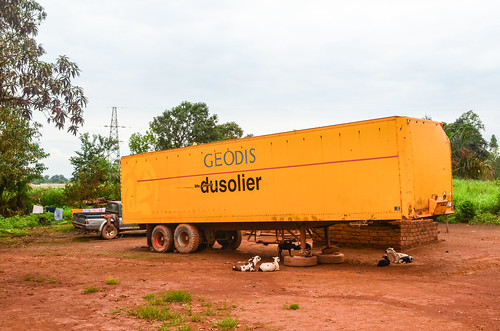
The road between Loudima and Dolisie is either an enlarged graded dirt one, or the brand new tar one that is not open yet. Like on the new highway coming into Dakar, two-wheelers are tolerated to pass between the stones blocking the road, and we enjoy the asphalt alone. It feels like a revenge to be cycling a perfectly smooth super large cycling road, and being watched by the collective taxis , on a lower level than us, on the old narrow and bumpy dirt road, barely driving faster than us. When we share the same road, they stir up the dust and we suffer.


The only downside of this road is that, being a highway, it doesn’t cross any village, and we don’t find any water.
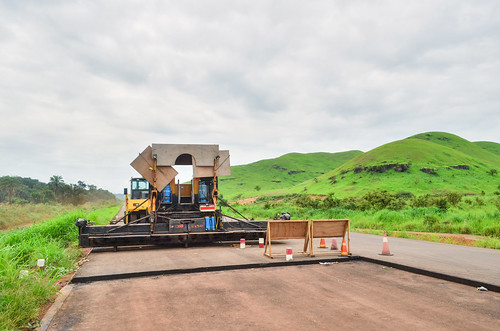
While taking pictures of the XCMG road building machines, we notice a worker was actually sleeping in one of them. It seems he is sleeping too well to hear us talking …

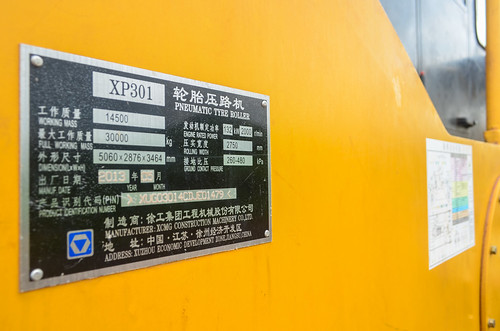
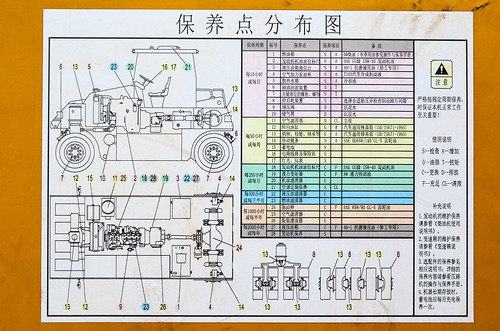
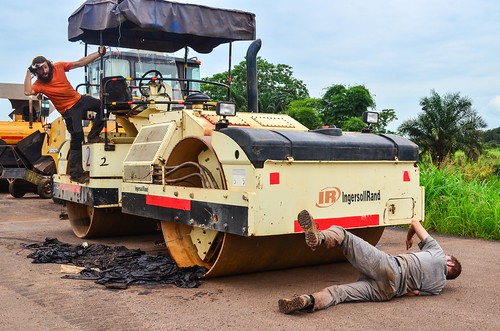
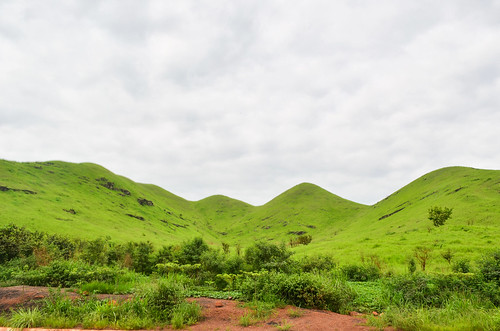
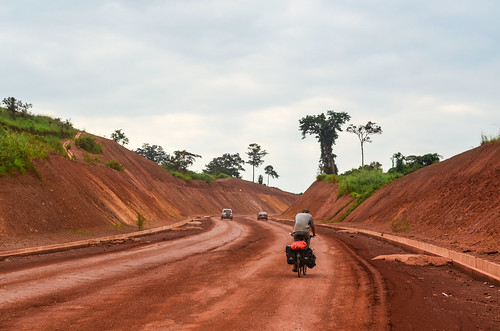
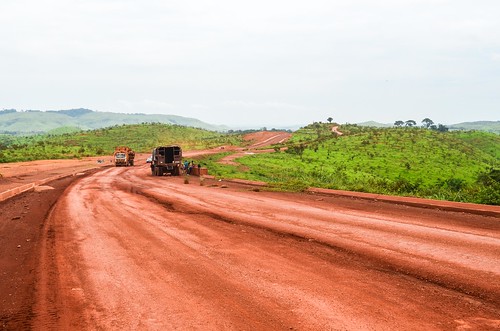

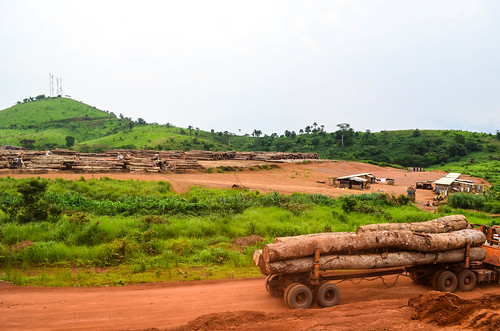
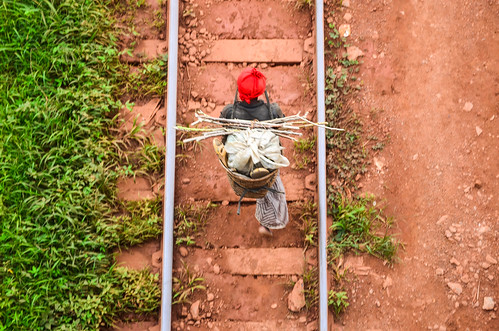
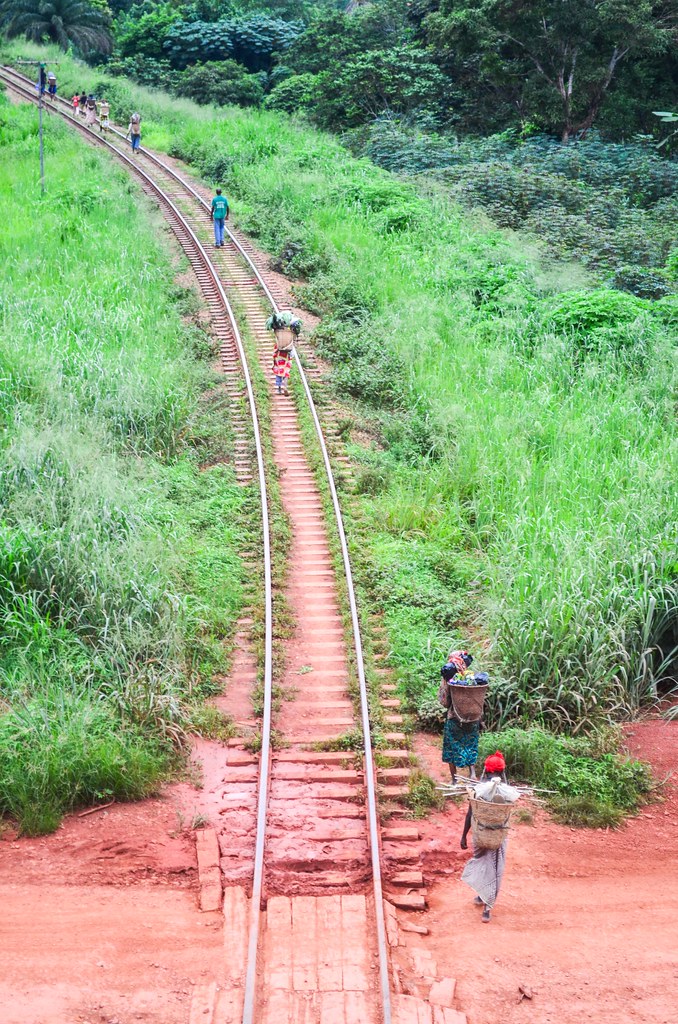
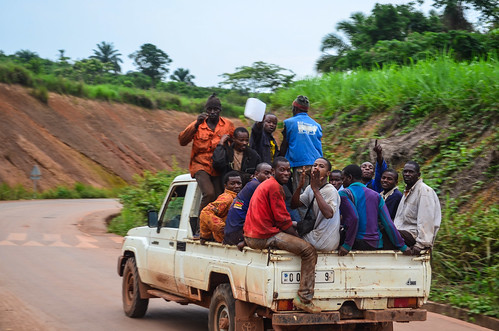
We arrive into Dolisie (a.k.a. Loubomo) in the evening and start our tour of the hotels. In one of them, the manager is watching soaps on CCTV, the Chinese international channel, in French. I bet this is an exception, but if the Chinese soaps are taking over the Nigerian soaps, then we could really say China conquered Africa.
Albert Dolisie was a lieutenant of Brazza during his expedition in Central Africa.
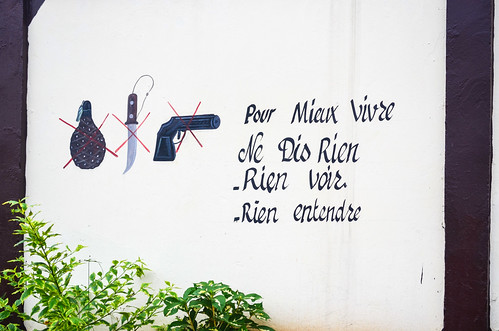
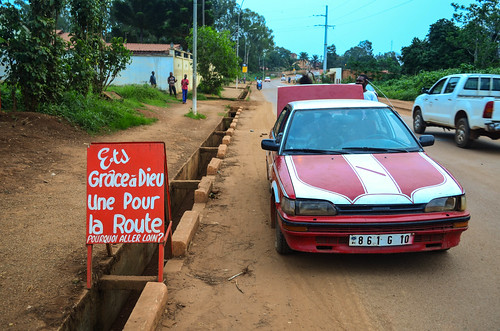
The Congolese Labour Party (PCT), the political party of the current president, Denis Sassou Nguesso, ruled for the first time in 1969, renaming the country into the People’s republic of Congo. Until 1989, Congo was an ally of the Soviet Union and the PCT flag reflects the former Marxist-Leninist ideology.
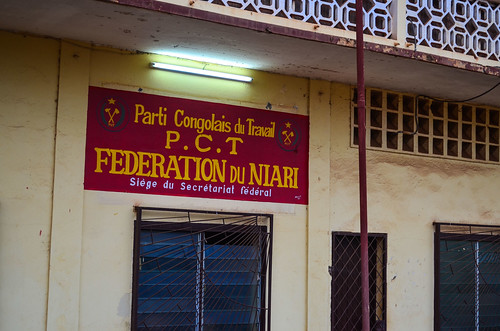
We end up staying another time in a catholic mission, charging a lot for poor rooms, selling only the “security”, which is actually nothing but the image. I never felt insecure in any hotel, including the many brothels I stayed at, which are the cheapest places. All in all, the prices in accommodation can climb up quickly, but the services offered or the niceness of the rooms barely change. At least, at the catholic mission, we can stay 2 men in the same room.

We have dinner in front of the Consulate of Angola, that I will visit tomorrow, on the airport road. We have finally good local food in Congo! Dolisie, Congo’s third city, also marks the return of the 3G network, which was completely non-existent since I left Nigeria. Prices are lower, les jus (universal name for Coca-Cola, Fanta, etc.) cost 500 instead of 900 in the bush. It’s still a 100 CFA more than the official price for a Coke universally sold on the continent. The price of the Coca-Cola glass bottle can perfectly be an indicator of the poor quality of the roads and of the remoteness of a village.
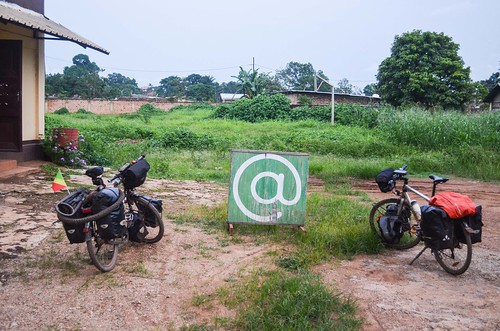





very interesting